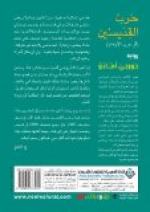|
This section contains 759 words (approx. 3 pages at 300 words per page) |

|
SOURCE: "Blame It on Bahia," in Book World—The Washington Post, January 2, 1994, p. 8.
In the following review, Aufderheide discusses Amado's War of the Saints and his celebration of African-Brazilian culture.
Reading a new Jorge Amado novel is like eating yet another Brazilian dinner. The ingredients are predictably pleasant: the beans, the rice, the palm oil, seafood, a zesty dash of lime. The novelty is all in the mix and the company. There's something stale about the execution this time, but you can hardly be surprised.
Amado has juggled the ingredients he uses in The War of the Saints more than 20 times before. This is the latest novel in a career that began in 1933, with brutally social-realistic works written in the passion of leftish youth. Since then, Brazil has joined the world's top 10 industrial nations, and Amado has mellowed without losing a populist edge to his never-far-from-pulp storytelling.
His...
|
This section contains 759 words (approx. 3 pages at 300 words per page) |

|


